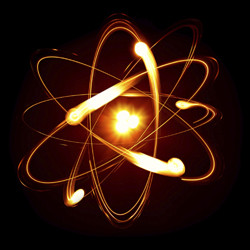New era for lighting and computing
The emerging field of spintronics, sometimes called magnetic electronics, includes both electron charge and its intrinsic angular momentum (spin) that imparts a magnetic field. Spintronics is producing novel electric and magnetic functionalities and innovations largely driven by the discovery of new materials. These promise to meet the future demands of information and communication technology (ICT) devices — lower energy consumption, lower cost and smaller size. Scientists initiated the EU-funded project 'Next generation hybrid interfaces for spintronic applications' (HINTS)(opens in new window) to develop novel HOI materials that demonstrate tuneable spin-transfer efficiency at the interfaces. Much of the uniqueness of devices employing organic active materials and inorganic electrodes is in the wealth of interactions at their interfaces. This is in part due to the wealth of possible molecules that are largely unexplored. Scientists fabricated innovative HOI materials with interfaces that allow control of spin polarisation through chemical tailoring and electric interfacial tuning. While the former method allows selecting spin direction during sample fabrication, the latter allows changing it during device operation, thus resulting in a reconfigurable operation. HINTS looked 'inside' the interface to reveal how the spin-dependent residence time is distributed in the first monolayers of the organic semiconductor. This represents a new way to quantify spin filtering that has the potential to find applications in future devices based on HOI materials or inorganic devices. Project work also paved the way to fabricating laboratory and industrial devices with desired magnetoresistance values. One of the major achievements was to detect magnetoresistance at high voltages. This opened new possibilities of using spin-polarised carriers at the operating voltages of organic light-emitting diodes or of organic field-effect transistors. Organic spintronics is thus being exploited for the first time in these two ICT applications that are widely employed in display and lighting industries. By focusing on excellent control of spin characteristics and behaviours at HOI interfaces, HINTS provided the basis for a new generation of spintronic devices.







